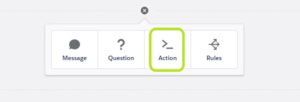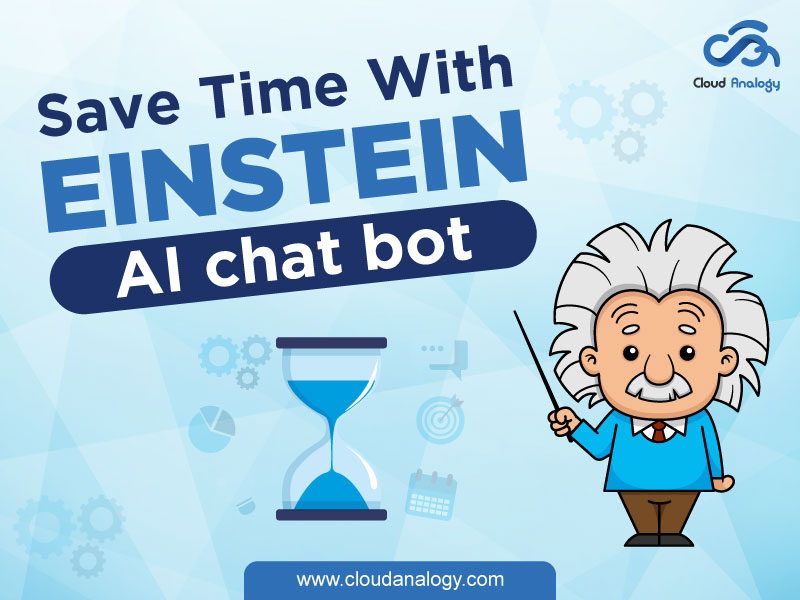Sharing is caring!
Einstein Bots are robust tools that use Artificial Intelligence to enhance the customer service experience. Einstein Bots are automated chatbots used in customer support or sales enablement processes. Since Einstein Bots do not interact with any agent, they provide a seamless experience to customers offering information related to your product or logging any support case.
Moreover, the Einstein Bots have Natural Language Processing (NLP) to understand customer typing style and guide with replies in the form of messages on chat. The recent releases of Einstein Bots come with capabilities that can initiate Flow, Apex Action, and Email.
This blog post will provide insights on why to use bots, some important terminologies used in chatbots, how to create an Einstein Chat Bot, and the Live Implementation Snap of the Einstein Chat Bot.
Why Should You Use Bots?
- Get an instant response for customers.
- The Bot can immediately answer customer queries. It reduces the number of meaningless cases that get logged.
- Save time for agents to concentrate more time to work on complex cases since the Bot can redirect easy cases.
- It can help to reduce the number of agents efficiently.
- Reduce the waiting time for customers to connect with agents drastically.
- Bots can show personalized, predefined greetings to individual customers.
- Bots can learn how to respond to customers appropriately and give the best solution using NLP (Natural Language Processing).
Before creating our first Chat Bot, let’s explore some important terminologies that help you to understand how to configure this BEST.
Some Important Terminologies-
- Variables
A developer knows what is Variable, as similar to variables in Apex. The variables are used to store data, like fields in Salesforce for the Admins. The bot needs the variables to store information gathered from the customer and Salesforce.
It is possible to reuse that data to present it to the customer or query more information from Salesforce. If you want to populate a variable, you can ask the customer a query and store their answer or use flows & Apex (invocable methods) to obtain data from Salesforce.
The Bot automatically populates some of the predefined context variables at its launch. “ChatKey” is one of these context variables, which automatically stores the chat key of the Live Chat Transcript created when the Bot is launched.
- Entities
They can be termed as a wrapper for variables. They act like an additional data type. Salesforce offers standard ones like Boolean, Date, DateTime, Location, Money, Number, Object, Organization, Percent, Person, and Text, but you can create custom ones using a regex pattern or a value list.
Entities are only used for validation when your customer provides the bot with information to stop it from receiving “dirty” data. When the customer offers the bot their email address, they will be asked to retry if they type anything other than an acceptable email address.
- Dialogs
Dialogs are conversation snippets to control what your bot can do. They can act like functions or methods the bot jumps between during a chat. Dialog Intents are optionally included in each dialog, phrases your customers might use. The bot learns from Dialog Intents that you input yourself, and then when one is recognized, the corresponding Dialog is initiated by it.
You can specify what you want the bot to do within these Dialogs like Message, Question, Rule & Action. As the bot enters a Dialog, it will execute everything within that specific Dialog and then perform one of the four actions at the end, like – ‘Wait for customer input,’ ‘Show a menu’ (of Dialogs), ‘Start another Dialog’ or ‘Transfer to Agent.’
- Messages
Messages are the most straightforward ones in comparison with others. A bot prints a message. Messages can also contain merge fields that refer to variables. For example, it is possible to merge the customer’s first and last name, store these in variables and then reference them in a message.
- Questions
It helps to gather more information from your customers. It is where an Entity is selected to wrap your variable. For example, suppose you wrap your variable in the email regex pattern entity, and the customer enters anything other than a valid email address. In that case, it will be rejected, and the Bot will ask them to retry.
- Actions
They use Flows or Apex to get/update/delete data from Salesforce. They comprise input variables and output variables. For example, you could ask the customer for their registered email address and then run a Flow that finds that customer’s record from their email address and returns desired information that the customer is looking for.
There is a game changer advantage of using Apex, and that is to help you to make callouts to external services using Salesforce’s REST API and to store any data in the bots variables for referencing later on.
How to Create an Einstein Chat Bot?
Step 1: Enable Einstein Bots
Setup→ Feature Settings→ Service→ Service Cloud Einstein → Einstein Bot

Step 2: Create a New Bot
- Click New on the Setup Page of Einstein Bot.
- Provide the basic details related to the bot, like name, welcome message, and main menu options.
- With a ready new bot, you go to the Bot Builder Overview Page
- Explore the New Pages like Overview, Dialogs, Entities, and more.
- Click Activate to activate the new bot.

Step 3: Einstein Bot Builder Edit View
It is possible to do your configuration.

Let’s create some more Dialogs.
- “Do you have any Service related issues?” – Created already
1.1 “Is it Related to ORDER?”
1.1.1 “Raise an Order Related Ticket?”
1.1.2 “Set a Call Back?”
1.2 “Is it Related to Return Item?”
2. “Do you want to Raise a Ticket?”
2.1 “Ticket on Order Support?”
2.2 Ticket on Return Support?

Step 4: Setup the “Snap-ins”
Setup→Feature Setting→Service→ Embedded Service (Formerly known as Snap-ins) → Embedded Service Deployment
Click “New Deployment” from the top right corner of the Form.

Now we proceed to set up “New Snap in deployment.”
Give the Deployment name.
Step 5: Implementation Steps in Community Site
Setup then Go to-> Feature Settings then go to-> Communities
Click on “All Communities,” then Create your “New Community” → Choose a Template if you want to ( at this time, ‘Customer Service is chosen by me) → “Get Started” → Enter a Name and URL. It will open your Workspace → Click on “Builder” and land on Community Building Platform.

Put the Chat Deployment that was created before by you.

Live Implementation Snap of Einstein Chat Bot-
Conclusion
Salesforce Einstein Chatbots are automated chatbots that help the sales team improve their customer assistance. However, they are not human replacements. They use NLP to understand customer inputs and requirements.
They can self-improve and increase sales and productivity for your business. They can save time for your sales reps to answer complex customer queries with instant answers to straightforward queries. It can make your investment more palatable. While using a chatbot, Salesforce has suggested that it can scale up your business at a lower resource cost with these AI-driven chatbots.
Do you want to scale up your business at a lower resource cost? The competent experts at Cloud Analogy, one of the top-notch Salesforce Consulting companies, will guide you on the benefits of using the Salesforce AI Chat Bots. We offer affordable Salesforce Consulting services to provide effective solutions for your business. Connect with our expert and certified team at Cloud Analogy and start your project today.

Ajay Dubedi
CEO | Founder
Ajay Dubedi, the founder and CEO of Cloud Analogy, is a prominent Salesforce Sales, Service, and Marketing cloud Consultant with a rich expertise in handling challenging business models. Ajay has assisted and implemented solutions in industries comprising Banking, Health Care, Networking, Education, Telecommunication and Manufacturing. Ajay is globally acclaimed for his extensive experience in APEX Programming, VisualForce pages, Triggers, Workflows, Page Layouts, Roles, Profiles, Reports & Dashboards.Hire the best Salesforce Implementation Partner. Choose Cloud Analogy, the world's most preferred Salesforce Implementation Company that provides custom CRM Implementation services.








